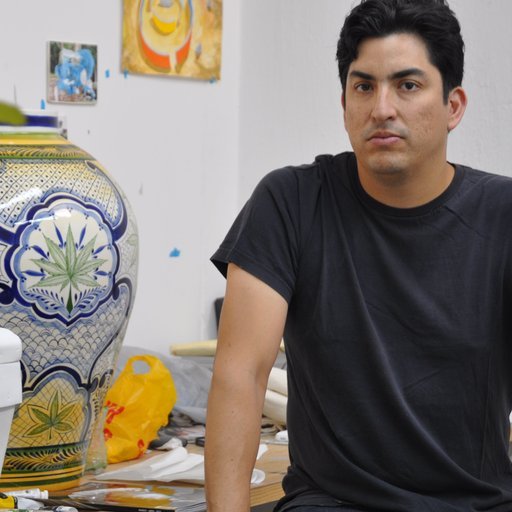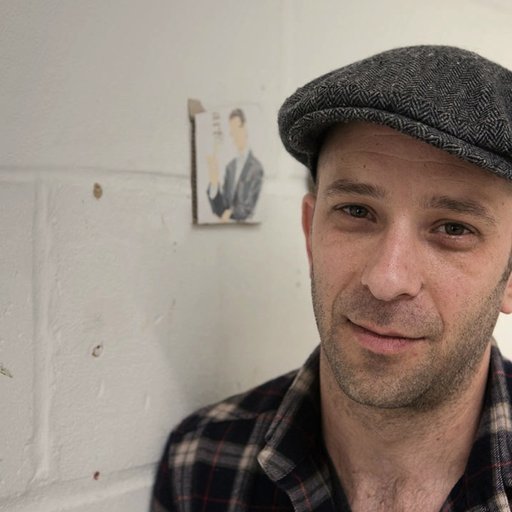The French-born artist Alexandre Singh first rose to prominence in the United States with his Assembly Instructions, a 2008 series using performative lectures and collages to invent complex relationships between figures like Lord Byron and Alexander Pushkin and fictional characters likeMeredith Grey (from "Grey's Anatomy") and Carrie Bradshaw. For his latest endeavor, The Humans, organized by Performa 13, Singh has once again added a dash of whimsy to the otherwise Big Idea themes of consciousness and the meaning of lifewith a weeklong comedic play that stars two characters plotting to prevent the creation of the world. We spoke to the artist about the themes behind his new work, which will be performed at the Brooklyn Academy of Musicfrom November 13-17.
Whether you're working in sculpture, collage, or installation, your work tends to be grounded in narrative. Was it a natural leap, then, for you to turn to a more traditional theater production for your latest project?
I’ve wanted to do a play for a long time. My intention has always been to work in that medium, so I began learning how to write and to work with actors to some extent. It was also my first time directing. I had an idea a long time ago to do a play in the style of Aristophanes: very visual, anarchic, and performative—and I enjoy comedy quite a lot. So a long time ago, around 2005 or 2006, I was working on a play about two forces in antipathy with each other, the sculptor Charles Ray and the Nesquik bunny, which is very Aristophanic. Then, about two years ago, the director of the Witte de With center asked if I was working on any projects, and I told her about this. We brought it to Rotterdam.
Your two main characters are based on two entirely disparate figures, a real-life art legend and a cartoon character created to promote a chocolate-milk brand. Where did you get the idea to pair a contemporary artist with a corporate mascot?
I'm a big fan of Charles Ray's work. I don't know if he'll appreciate my representation of him, although my character is quite removed from reality—it's more like the dream of the dream of Ray. His insights into sculpture are very platonic. They're about pure idealized sculpture, so the character is a platonic spirit, whereas the chocolate bunny is the dream of corporate mascots. She imbues everything with sexual energy, she cannot speak because she is sensual and irrational, and she shits everywhere. Think about it, the rabbit in pop culture is associated with Easter, the dying of a god, the resurrection of a god, with reproduction, and with shitting everywhere. So these two main characters are representing the dichotomy of the masculine, the enlightened rational man, and the female, full of hormones, representing the moon and nature.
You've said that the work of Aristophanes, widely considered the father of comedy, was a major inspiration for this project. Did you worry at all about how his style would translate for a contemporary audience?
The thing about his work is that it is often a pastiche of Euripides. He was avant-garde, but also a comedian, so my project is also a pastiche of historical references, including Shakespeare, aspects of kabuki, group theater, and drama. It's really much closer in spirit and sense of humor to Shakespeare's comedy, or to the Romantics. It all mixes into a strange universe that's principally theater but also involves songs and dances. There are points where the audience will laugh out loud, but there are also poetic moments and, I hope, magical moments. I'm not a comedian, but I'm a big fan of Woody Allen, and it's written sort of in that way.
Might corporate cartoons like the Nesquik bunny operate as kinds of mythological figures to the contemporary Western viewer?
Corporate characters are a little empty and flat, but they're characters we all know, and naturally we're all familiar with the same Hollywood celebrities, but corporate mascots are more interesting because they're more ambiguous. It doesn't need to be Nesquik and Charles Ray—they're just pegs on which to hang more ancient and universal ideas. Take Tom Cruise, he's a great tragic hero: full of hubris, probably wants to do good, but does bad inadvertently. In Aristophanes's work you often encounter real figures from society who are characters put on stage. It sounds odd, but it happens today with "Saturday Night Live"—and "South Park" is pure Aristophanes in that it's satirical, incredibly grotesque, and very funny. Woody Allen is another Aristophanic character because he makes these slapstick comedies that make fun of Bergman or Dostoevsky or other subjects that are quite removed from the style.
You also had to become a writer during the realization of this project. Did that process come naturally to you ?
I would never do that again. I had to write it while working on financing and getting venues. And I like knowing visually how something will look, but usually a writer writes and it gets handed over to a director to create the visual idea. But if you have a visual idea as you're writing you can really make it part of the bedrock. When you're the director yourself, you can plant the idea in the text as you go. But the process of writing while you're in production is very difficult. No piece of theater is really written until it's performed on stage with actors.
All of the artists, choreographers, actors, and singers involved must have also made this a more collaborative process than you're used to.
My collaborators would always say they never worked with someone more dictatorial. I think directors think they're collaboratorial, but they're not. The medium is inherently collaborative, but I like to put my finger in every single pie.
How do you expect the American reception will differ from the original performances before a Dutch audience?
It's being performed in a very small space in New York, and it was really designed for a big theater because there's a chorus and they sing and dance. But it was hard to convince them to give me any theater at all, much less at BAM, so while it may be to the detriment of the visual qualities, the audience will be much closer and it'll be better for storytelling and play. It'll also be better for native English speakers, because the language in the performance is so difficult and complex. Charles Ray, for example, speaks in iambic pentameter and an Elizabethan vocabulary, and the bunny is a character right out of Oscar Wilde, and so she speaks in an idiosyncratic idiom and linguistic puns.
Do you have any plans for The Humans after Performa ends this month?
I would love to show it more. I'm trying to organize some dates in Europe, a U.S. tour, and then in New York again. It took an enormous amount of production and it's a strong show.























